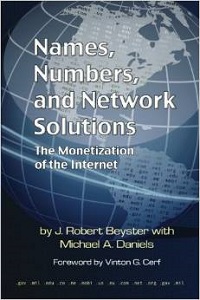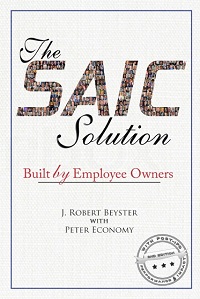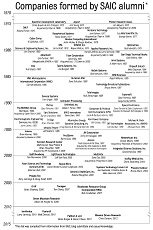As some of you know, early in my career I worked at the Los Alamos National Laboratory, where I served as a research physicist. Of course, the design and production of cores for nuclear bombs was the primary focus of our work there, and ever since, I guess you could say I have been a student of the topic. One of our very first contracts at SAIC was with the Defense Atomic Support Agency (today known as the Defense Threat Reduction Agency) to analyze nuclear weapons effects data.
I recently read an interesting article in the New Yorker magazine titled “Iran and the Bomb.” The article discusses the question of whether or not Iran is trying to develop a nuclear weapon. The article’s author — Seymour Hersh — makes the assertion that Iran is not currently developing nuclear weapons, nor does the regime in power have any particular desire to do so for the foreseeable future.
This assertion goes against the conventional wisdom of recent U.S. presidential administrations, which have considered the development of a nuclear weapon by Iran to be a forgone conclusion. However, the most recent update to the National Intelligence Estimates (NIE) by the Director of National Intelligence indicates that there is no evidence that Iran has a bomb-building program in place. Apparently, Iran was once pursuing the development of a nuclear weapon, but the program was halted in 2003.
It has long been thought that the primary motivation behind such a program was Iran’s desire to defend from an Israeli attack, or possibly to attack or intimidate Israel itself. However, according to the Defense Intelligence Agency, the actual target of Iran’s bomb-building program was Iraq, not Israel. Iran’s leaders suspected — as did the Bush administration — that Iraq was building weapons of mass destruction (WMD), including nuclear bombs. But once the U.S. dismantled the regime of Saddam Hussein, and no WMDs were found, that threat went away, along with Iran’s need for a nuclear weapon.
Iran does continue to enrich uranium, so the potential for Iran to someday develop a nuclear weapon remains. In fact, Iran recently announced that it will triple its capacity to enrich uranium to the 20 percent level. This move is quite different, however, from having an active bomb-building program. It is my understanding that Iran’s production of a stockpile of 20 percent enriched uranium would cut by more than half the time needed to enrich to levels above 90 percent, some quantity of which is required to produce a working nuclear weapon. We must therefore remain vigilant for evidence that Iran is diverting enriched uranium for military purposes, and be ready to counter the threat if it ever does materialize.
– Bob





Iran’s enrichment program is under IAEA safeguards. It is not doing anything illegal. In fact Iran’s nuclera program started under the Shah, with the aid and encouragement of the US. Saying that IRan seeks the “capability” to make nukes is rubbish – any country with a nuclear program has this theoretical “capability”. The nuclear dispute with IRan is a pretext — it isn’t the real issue, just like WMDs in Iraq was a pretext. IAEA head El Baradei has said that the Iranians were willing to compromise long ago by putting a cap on their enrichment but the US rejected any negotiations.
Hass: It sounds a little bit like you think the Iranians were not up to any mischief with their enrichment program. From what you say, maybe it’s credible that their only intentions are to fuel reactors to generate power. I’m not so sure. — Bob
Perception is reality. A very great danger is the perception of other nation’s regarding Iran’s nuclear program-especially Israel. Should they (the Israeli’s) believe that Iran actually has a weapon or is very close to it-and while still under the rule of the resident nut cases-they may well decisde a unilateral strike is the only answer for their survival. Should this condition prevail (belief that a weapon exists), no amount of external coercion or cautionaries will deter a first strike. At that point, things quickly get out of hand.
Let’s hope that the “Arab Spring” manages to bleed over to the Persians.
I am fairly familiar with the general Iranian population and I am somewhat amazed that the Mullah’s have been able to keep their western oriented well-educated middle and upper classes out of power. I predict that it won’t last. The people are too smart and too well-educated to remain in a small box for long.
Keith: I hope you’re right — the current Iranian regime is no friend of ours, and the country will continue to destabilize the Middle East. It would be best for all who hope to see peace someday come to that region if the Arab Spring reaches eastward to the Persians. — Bob